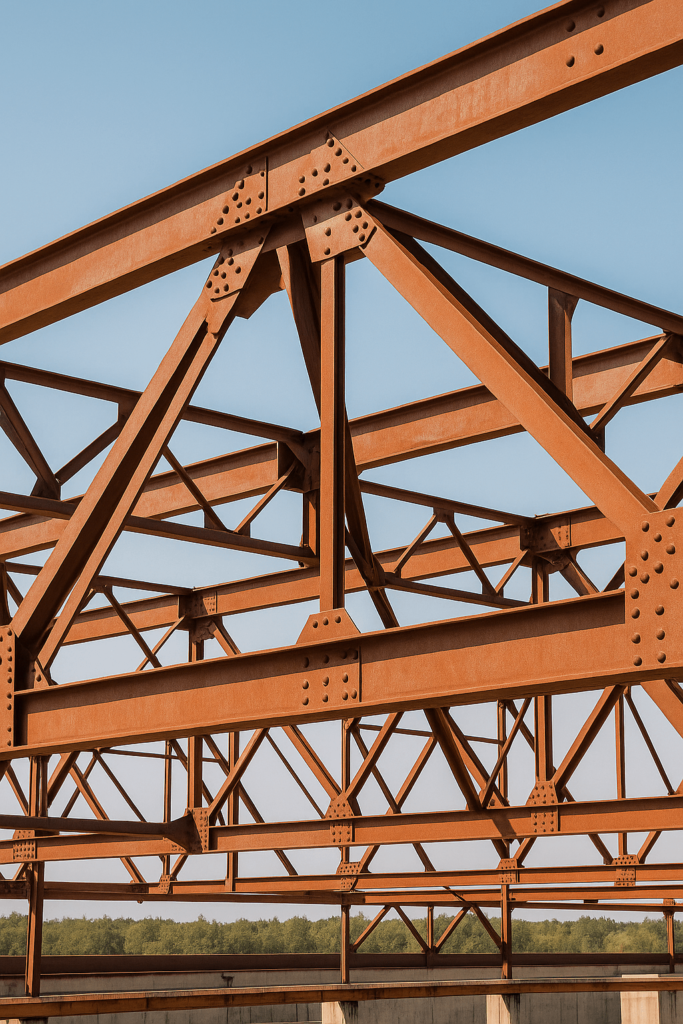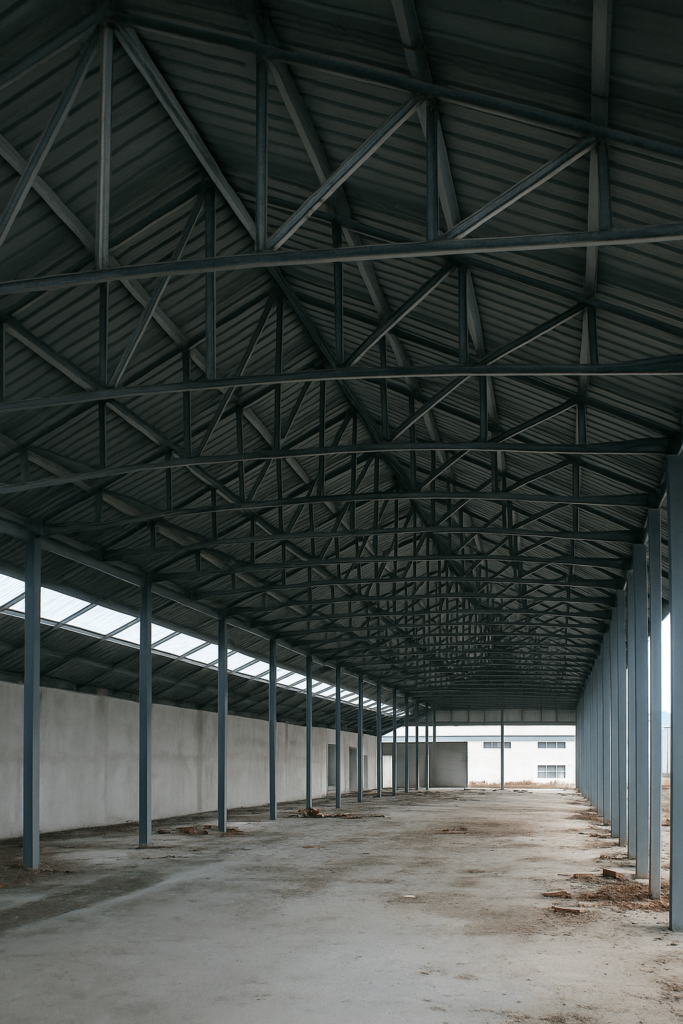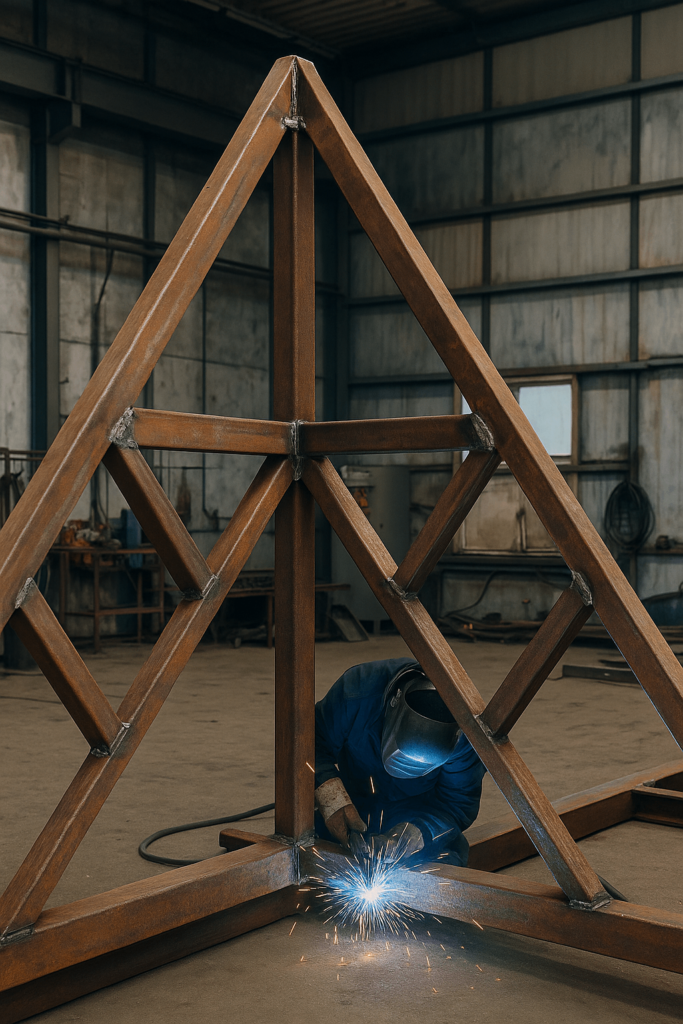The Role of Steel Trusses in Modern Construction
Steel trusses serve as the backbone of efficient structural systems in commercial and industrial construction. These engineered frameworks deliver high load-bearing capacity while maintaining minimal material usage, making them a cost-effective solution for large-span applications.
In B2B procurement contexts, especially for overseas buyers, understanding truss performance is critical to ensuring compliance with project specifications, cost control, and smooth downstream fabrication or installation. Steel trusses offer consistent geometry, prefabrication potential, and compatibility with modular systems—factors that directly impact procurement timelines and logistics planning.
YISHANG focuses on manufacturing trusses that meet international engineering and quality standards. For procurement managers, this means assurance of weld precision, dimensional tolerance, and long-term structural performance across diverse climatic zones.
Structural Functionality: How Steel Trusses Distribute Loads
Trusses function by redirecting applied forces—such as snow loads, roofing material weight, and wind pressure—into axial tension or compression within their members. This results in an exceptionally stable framework, ideal for wide spans without intermediate support.
Each truss comprises top and bottom chords, verticals, and diagonal web members. The geometric arrangement ensures load path efficiency while reducing the need for oversized beams. In manufacturing terms, consistent angles and repeated segments support faster fabrication and modular scalability.
For steel truss buyers, this structural logic translates into practical advantages: reduced shipping weight, fewer required support columns, and compatibility with bolt-on installation methods.
Key Steel Truss Types for Industrial & Commercial Projects
Different truss designs fulfill different structural roles. For buyers planning procurement, each design comes with specific performance benefits, cost implications, and fabrication requirements. Below are the most frequently sourced steel truss types YISHANG supplies globally.
Pratt Truss
This truss type is widely used in transportation terminals and logistics hubs where dynamic loads are frequent. Often ordered by commercial developers building large-span warehouses and shipping centers.
Warren Truss
Highly suitable for factories and commercial floors requiring evenly distributed loads. Frequently sourced by general contractors working on light industrial buildings and production facilities.
Howe Truss
Ideal for agricultural shelters and mixed-material constructions. Commonly requested by agricultural equipment distributors and rural project developers in Southeast Asia and Latin America.
Fink Truss
Perfect for pitched modular roofing systems. Often used in prefabricated housing projects and educational facilities by modular building firms.
Bowstring Truss
Preferred in aircraft hangars, arenas, and public infrastructure. Typically procured by airport contractors and municipal project managers handling large-span civic developments.
North Light & Sawtooth Truss
Targeted at manufacturing sites prioritizing energy efficiency. Often specified by sustainability-focused OEMs and green-certified factory developers.
King and Queen Post Trusses
Aesthetic and functional for showroom ceilings and mezzanine spaces. Popular among boutique builders and commercial interior contractors.
Scissor Truss
Used in hospitality or premium residential applications. Frequently included in RFQs by hotel developers and custom home builders seeking vaulted ceiling solutions.
Fan, K, and Flat Trusses
Applicable in modular transportable units and temporary facilities. Typically requested by military contractors, construction rental firms, and exhibition structure suppliers.

Fabrication Considerations That Matter to Buyers
While design suitability is crucial, what often determines success in a procurement context is manufacturability. Buyers must evaluate if the truss is not only structurally sound, but also economical to produce, transport, and install.
Key Metrics Include:
Node count and weld length: Affect labor and inspection time
Material availability: Steel grades like Q235, Q355, or ASTM A992 depending on region
Surface treatments: Hot-dip galvanizing, powder coating, or zinc primer systems
Tolerances: Industry norm of ±1.5mm across length and bolt centers
YISHANG Advantage: With CNC plasma cutting, robotic welding, and ISO 9001-compliant QA systems, we ensure consistent quality from batch to batch.
Table: Fabrication Efficiency by Truss Type
| Truss Type | Avg. Weld Time | Node Complexity | Assembly Time |
|---|---|---|---|
| Fink | Low | Low | Fast |
| Pratt | Medium | Medium | Moderate |
| Bowstring | High | High | Slow |
| Flat | Low | Low | Fast |
For procurement teams, understanding these metrics informs better total cost of ownership analysis.
Real-World Applications and Procurement Pitfalls
Choosing a steel truss isn’t just about structural logic—it’s also about practical trade-offs. Procurement decisions should balance cost-efficiency, manufacturability, compliance, and shipping feasibility.
Logistics Centers: Fink or Warren trusses enable streamlined production and fast on-site assembly. Welded joints and pre-galvanized finishes reduce installation risks.
Airports & Event Halls: Bowstring or Scissor trusses support long spans without central columns, but may increase freight costs due to complex shapes.
Retail Chains: Flat trusses maximize usable ceiling height and minimize shipping volume, lowering logistics costs for multi-unit rollouts.
Procurement Pitfalls to Avoid:
Over-specifying for aesthetics—can increase node count and weld time significantly.
Ignoring fabrication tolerance standards—may lead to delays during on-site fitting.
Omitting regional compliance standards—can jeopardize approval (e.g., EU requires CE Marking or EN 1090 compliance; North American buyers may need ASTM and AISC standards).
YISHANG supports clients with pre-engineering consultations to avoid these issues early.
From Engineering File to Finished Product
Buyers benefit from suppliers who can translate drawings into production-ready outputs without miscommunication. At YISHANG, our process includes:
Design Interpretation: DWG/DXF/BIM files verified by in-house engineers
Material Planning: Sourced based on regional specs (ASTM, EN, JIS)
Precision Cutting & Forming: CNC systems ensure millimeter accuracy
Assembly & QA: Jig-based welding, ultrasonic inspection, trial fitting
Packing & Logistics: Anti-corrosion wrap, seaworthy pallets, batch labeling
This integrated model enables predictable timelines and consistent output—critical for wholesale buyers with volume targets.
Steel Truss Trends Relevant to Sourcing Teams
The global construction shift toward modular and green building is transforming truss procurement. Design tools like Rhino/Grasshopper enable advanced form-finding. Buyers now ask for structures that are light, adaptable, and future-proof.
Additionally, export buyers increasingly specify:
Disassemblable joints for relocatable structures
EPD-compliant coatings for carbon reporting
Bolt-on trusses for onsite labor reduction
YISHANG is actively integrating these needs by updating fabrication cells, adopting sustainable surface treatments, and supporting flexible export-ready formats.
Conclusion: Build Smart, Source Smart
Steel trusses are more than structural elements—they’re strategic procurement choices. Understanding design types, manufacturing efficiency, and how those affect your logistics and installation timelines is vital.
YISHANG delivers engineered steel truss solutions tailored to wholesale buyers, with precision, reliability, and flexibility in every order.
Ready to source steel trusses for your next project? Contact YISHANG to discuss your requirements.



